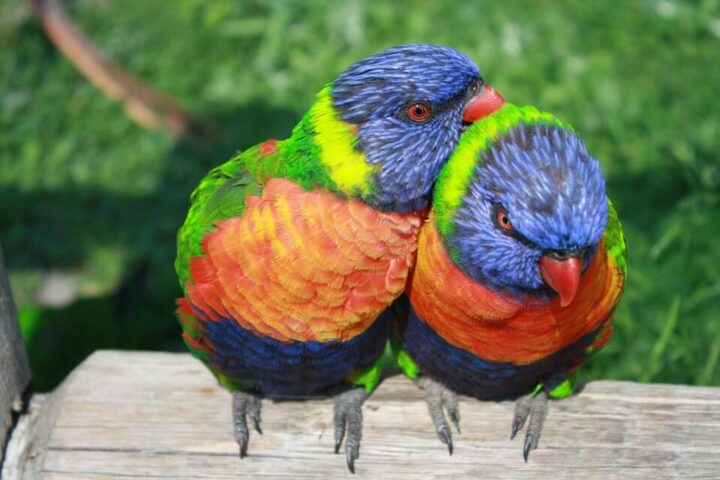Many of us have found ourselves in this situation before. You might be walking the dog, driving to work, or just minding your own business when you come across a wild bird in need of some assistance. For those of you wondering how to best handle these situations, listed below is a basic guide.
Visual assessment
Is the bird injured? If the answer is yes; it will need to see a Veterinarian as soon as possible. If you aren’t sure if it’s injured, but something doesn’t seem right about the situation, it’s time to ask yourself a few more questions!
What species? Is this the type of bird you would usually see screaming across the sky, or pecking about in the scrub? Even if you aren’t familiar with the exact species, most people generally have a good idea of bird types and their normal behaviours. Eg; if you see a lorikeet sitting quietly on the ground and it doesn’t fly away when you approach it, something is not quite right!
Is this a nestling/fledgling? A nestling is a young bird that is not yet able to stand, perch or fly. If a nestling is feathered, active and the parents are around, the bird can be either placed back into the nest or a substitute nest can be made. Fledglings are slightly older than nestlings; they are out of the nest and able to perch and fly, but are still learning and not as competent as their parents. Sometimes they exhaust themselves or fall from a branch and are discovered on the ground. Often simply helping the bird back onto a branch is the only measure that needs to be taken. However if you find a bird and are unsure if this is the safest option, don’t hesitate to contact your local wildlife organisation or vet for advice.
The capture
Wild birds are generally frightened of humans, and this is important to keep in mind. If they feel threatened they will freeze, try to escape or attempt to defend themselves. The equipment required to capture and rescue a bird will vary greatly depending upon the species, the location of the bird and the injuries it may have sustained. Your safety is important, call a wildlife organisation and request a carer if you are unsure how to approach the bird.
What next?
What happens next can be crucial to the wellbeing and ultimate survival of the animal. It’s important to ensure the bird is kept in a quiet, dark and warm area to reduce their stress as much as possible. You might find yourself unable to contain them, and instead holding or restraining them until you get to a vet or wildlife carer. If this is the case, try to keep the bird calm by covering their head with a towel. Most birds will start to settle in a quiet environment if they are properly restrained and unable to visualise their surroundings.
Whether the bird needs to go to a wildlife carer or a veterinary hospital, it is in their best interest that they make it to their destination as soon as possible. It is helpful for the staff at vet hospitals to be aware if there is wildlife on its way, particularly if it’s an emergency, so be sure to call ahead if possible. If outside of business hours, most wildlife organisations have a 24 hour hotline and provide prompt advice.
*If you need to drop a bird off at a vet, be sure to leave your contact details and information about where the animal was found. This information can be crucial for the survival of the bird if it is able to be released back into the wild.
*If you are pruning trees, particularly during the warmer months, always check there are no nests in the tree before you start trimming!
*Unless you are a trained wildlife carer, please refrain from force-feeding food/water to a bird.
*Sick, injured and baby birds are unable to thermoregulate and require external warmth. A soft drink bottle filled with warm water, wrapped in a towel and placed close to the bird is an easy way to help them keep warm.


